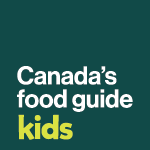Children and adults have different roles when it comes to food and eating. Consider their roles and other factors that influence eating patterns during activities. This reflection can help children develop good relationships with food.
On this page
- Roles of children and adults in food and eating
- Factors that influence eating patterns and food selection
- What to consider during activities
Roles of children and adults in food and eating
Children and adults have different roles when it comes to developing eating habits that support the health and well-being of the child.
The Ellyn Satter Institute provides information on children’s and adults’ roles around food and eating, known as the Satter Division of Responsibility in Feeding.
The Satter Division of Responsibility in Feeding (sDOR)
Adults who are responsible for feeding children determine:
- what food is offered
- when food is offered
- where food is offered
Children are responsible for:
- whether they wish to eat
- how much food they wish to eat
The sDOR is copyrighted by Ellyn Satter, and the Ellyn Satter Institute is the official source for the interpretation and application of the Satter models.
Factors that influence eating patterns and food selection
The foods children are provided are influenced by many different factors. For example, people in Canada have experienced:
- evolving food marketing strategies
- high rates of household food insecurity
- a decrease in the transfer of food skills from caregivers to children
- increased spending on highly processed foods, including eating out
Children’s eating habits are influenced by the foods that are available to them. For example, children may not have regular access to vegetables and fruits in their home or have a limited variety of foods available in their community.
Household access to food and water
Some children in Canada live in households that are confronted daily on finding ways to provide food. Some households may be:
- unsure if they’ll have food from one day to the next
- needing to compromise the quality or the variety of foods in their home
- going without enough food to meet their household’s needs or to feed everyone at each meal
- going a day or more without food
A combination of factors can influence a household’s ability to provide food and make healthy eating decisions. Examples include:
- income
- gender
- culture
- education
- employment
These factors affect some populations unfairly and can lead to poorer health. Populations at higher risk of poor health include:
- Indigenous Peoples
- newcomers to Canada
- people living in rural areas
- people living on low incomes
Advisories to protect the public from drinking potentially unsafe water are more frequent in small, remote or isolated communities. Indigenous peoples who live in these areas may face limited access and availability of safe drinking water.
Addressing access to food and safe drinking water with compassion
Be mindful that children have varying access to food and water. These topics may be difficult for some to discuss. We encourage you to think about how sensitive this topic may be and to approach it with care and compassion. Aim to be non-judgmental in your approach and avoid:
- labelling foods and drinks as good or bad
- commenting on items in children’s lunches or snacks
- focusing on the nutrients of concerns found in foods, such as sugar, salt or saturated fat
Adapt activities to be sensitive to your group or the community where you work. Try to:
- choose activities that are relevant to your group
- allow children to try foods throughout the activity, rather than waiting until the end
- some children may arrive hungry to an activity
- be sensitive that not all children have the same exposure to foods and knowledge of foods
- substitute foods in activities with some that are available and affordable in your community, such as canned or frozen options
Transferring food skills
Food skills are the different abilities needed to acquire and prepare nutritious meals that are safe to eat and culturally appropriate. They affect the types of foods available in the home and influence eating habits.
Food skills can be taught to children in different settings, such as in the community and at home. Some children don’t have the opportunity to learn food skills at home. This can be for many different reasons, including:
- lack of cooking equipment
- bans on harvesting or hunting
- uneven availability and access to food
- parents or guardians working several jobs
Learning food skills, like how to cook and prepare food, is important to build eating habits that support health and well-being. Aim to create opportunities for your group to learn different food skills.
What to consider during activities
During activities, consider the roles around food and eating and factors that influence eating patterns and food selection. These considerations can help you communicate and teach appropriately. Try to:
- create opportunities for your group to learn different food skills
- create a judgment-free space and support pleasant food experiences
- learn about the types of food that are available to your group and modify activities accordingly, for example:
- use canned or frozen vegetables and fruits instead of fresh
- look through local flyers and modify activities to include foods on sale that week




